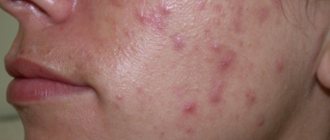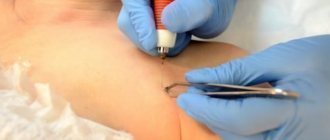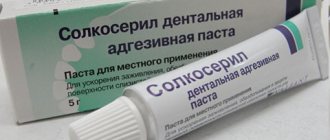Mole removal methods
There are several methods by which you can get rid of moles that cause inconvenience:
- Surgical method. The use of this method is advisable only if the mole has grown greatly, or if there is a suspicion that the neoplasm is of poor quality. The disadvantage of the surgical method is that after such operations a noticeable scar remains on the patient’s body.
- Method of radio wave coagulation. This method of getting rid of moles is used mainly in mucosal areas or where the skin is thin and sensitive. The removal procedure does not take much time and does not leave marks on the skin.
- Liquid nitrogen removal method. This method is used to remove not only moles, but also warts and papillomas. The disadvantage of removing tumors using liquid nitrogen is that it is impossible to predict in advance what the effect of this substance will be on healthy skin and tissue. Subsequently, scars may remain on the patient's body.
- Laser mole removal method. This method is a bloodless operation that leaves no marks on the body. When removing moles with a laser, a specialist selects a beam of a certain length that is appropriate in a particular case. The process of eliminating neoplasms occurs quite quickly, and after 5-7 days no traces of a mole or operation remain on the skin. It is difficult to give a definite answer to the question of whether it is painful to remove moles with a laser. But it is worth noting that most of these procedures are performed using local anesthesia, so most often the patient does not feel anything.
Types of moles in eyebrows
Has a mole above your eyebrow started to interfere with hair removal? Are you planning to get rid of it in the very near future? Then it will be useful to study what types of moles there are and what type of nevus you have. Some of them can be easily removed without consequences, others are problematic.
- Hemangiomas (vascular moles)
Rarely appear in the eyebrow, more often somewhere near it. They are distinguished by uneven edges, bluish-red or pinkish color, and turn pale when pressed. They can be flat (capillary) and lumpy (cavernous). They are difficult to remove because they are directly connected to the circulatory system.
- Warty
Warty moles are also an infrequent guest on the eyebrows, but they still occur. These are single or multiple plaques of various shapes, with an uneven surface of keratinized cells. They are distinguished by a dirty gray or brown color. Easily removed in the salon.
- Pigment
Most often, pigmented moles are located on the eyebrows. They can be of different colors: from light pink to almost black. If they are located right in the thick of the eyebrow, they will be much more difficult to remove. If it's somewhere nearby, there shouldn't be any problems.
In terms of size, moles on the eyebrows can be:
- large (more than 10 cm in diameter);
- medium (2-10 cm);
- small (up to 2 cm).
Large moles are especially dangerous, since they are the ones that most often transform into a malignant tumor. And removing them is also quite difficult. By the appearance of the mole, you can independently determine what type it is. After taking a biopsy (a piece of pigmented skin), specialists will conduct their own, more detailed studies. From them they can determine the depth of the affected cells:
- intradermal - the deepest accumulation of melanocytes, located in the dermis - the lowest layer of the skin;
- epidermal - the most superficial accumulation of melanocytes, located in the epidermis - the upper layer;
- border (mixed) ones take root between them.
The epidermal mole above the eyebrow of women is removed in a matter of minutes using laser nevus removal without any serious damage. Intradermal requires a more responsible approach, since the procedure for its elimination will be quite long and represent a real mini-operation. Now, finally, let's find out why this cosmetic feature of appearance is so dangerous?
Latest Research . Are you a woman and you have moles not only on your eyebrows, but also in large numbers on your body? In this case, according to the research of British scientists, you are very temperamental and love to have sex.
More information about the laser method of tumor removal
Is it dangerous to remove moles with a laser? Before answering the main question that interests most people who are planning to get rid of unwanted moles, it is worth learning a little more about this method. As mentioned above, this method of combating unwanted tumors is bloodless.
You should know! In addition to removing moles, the laser method also eliminates warts, lipomas (fat), fibromas and other benign tumors.
The main advantages of the method include:
- Almost complete absence of side effects. During laser removal of moles, a small crust may form on the patient’s skin, which will go away on its own within a week. Skin hyperpigmentation (impairment of pigment formation in the area of laser exposure), which occurs in extremely rare cases, also goes away on its own after 2-3 months.
- Painless procedure. If the mole is quite large, its removal requires the use of anesthetics; in other situations, the effect of the laser is much less, so the procedure is painless.
- No scars or scars. Already a week after laser removal of a mole, no traces of this procedure remain on the patient’s body. In rare cases, a small spot may appear for several months, different in color from the rest of the skin, which disappears over time. Therefore, after removing a mole with a laser, care is the most common.
- Rapid restoration of skin and tissues after the removal procedure.
- There is no danger of tissue infection in the area of laser exposure.
The disadvantages of laser mole removal are:
- It is inappropriate to carry out the procedure if the neoplasm is suspected of being of poor quality. Laser removal of moles is carried out only if it is confirmed that the neoplasm is benign. This is determined by taking special tests. Therefore, when asked whether laser mole removal is dangerous, most experts answer negatively. It must be remembered that an analysis to detect the malignancy of a mole is mandatory.
- The occurrence of edema if the patient is allergic to ultraviolet radiation (photodermosis)
- The need for drug treatment after laser removal of moles if the patient has certain skin diseases (herpes, dermatitis, etc.).
- The effectiveness of the procedure after the first application is only if the mole is not very large in size. In the presence of large tumors, removal should be carried out in two or more stages.
Why do spots appear?
The spots remaining at the site of the removed mole are the result of manipulations on the skin performed by a specialist, regardless of the removal technique. They may vary in color.
Red spots after mole removal
The patient may accidentally tear off the crust until it falls off on its own. In this case, a red dry spot will remain under the crust. Sometimes redness indicates a wound infection . In this case, the skin area becomes inflamed, body temperature rises and the risk of complications increases.
White spot after removal
White spots appear after a mole is burned out with a laser. With regular exposure to ultraviolet rays (for example, while tanning in a solarium or in direct sunlight), the removal site becomes noticeably lighter. health hazard from the appearance of white spots . Typically, such spots disappear on their own within 3-6 months, completely merging with the color of the skin. In very rare cases, the process of natural pigmentation takes 1 to 2 years.
Also, white spots appear on the skin if the body of the mole was located in the deep layers of the epidermis and melanocytes, which form the pigment, were removed along with it during the operation . As they grow, the white spot will gradually acquire a natural, normal color.
READ ALSO: Joyskin cosmetics: reviews, description, rating
Dark spots after removal
Dark spots that appear at the site of the removed nevus require careful attention, as they may indicate complications after surgery:
- Black . A dry, dark brown or black crust is not dangerous. Essentially, it is clotted blood . When the wound is completely healed, the crust will fall off on its own. Ideally, there will be a pink depression underneath (young skin);
- Brown . The presence of such a stain indicates that removal operation was not completed completely . Nevus cells remained in the layers of the skin. In this case, a visit to the clinic will be required. Most often, the specialist will refer the patient for a second operation;
- Violet . The most difficult case . The appearance of a burgundy or purple spot is an alarming symptom. Thus, the body signals inflammation as a result of an infection or that the mole was not completely removed, and the remaining nevus cells in the body began to degenerate into a malignant form. The sooner the patient goes to the hospital, the higher the chances of avoiding serious consequences.
Average prices for laser mole removal
Laser mole removal technology is the most optimal for the modern rhythm of life. The patient’s rapid recovery after this procedure plays a role here. If it is necessary to remove moles, you should contact experienced and proven specialists in this field, such as Elena Vladimirovna Salyamkina.
Once upon a time, laser elimination of tumors was a very expensive pleasure that even people with average incomes could not afford. Today, removing moles using this method at very reasonable prices has become possible. It all depends on which clinic you go to and the size of the tumor. The average cost of laser mole removal in Moscow is approximately 1.5 to 3 thousand rubles. For this price you can get rid of a benign tumor no larger than 2.5-3 cm in size.
However, it should be borne in mind that in addition to removing the mole, it is also necessary to find out its nature. Indeed, if this neoplasm is malignant, laser correction will become impractical. That is why, in addition to the removal process itself, you will need to consult an experienced doctor and conduct dermatoscopy (a preliminary examination procedure of the skin in the area of the tumor). These necessary health safety measures will also cost you around 1.5-2 thousand rubles.
Possible complications
In some cases, complications may arise that depend on the individual characteristics of the patient.
If your skin is very sensitive, the laser may cause redness and peeling of the areas around the removal site, similar to a sunburn. This is normal and goes away without a trace within 6 months.
It is possible that scars may appear at the site of removal if the mole was very large. Severe skin tightness is also a side effect and requires additional medical intervention, just like scars.
Inflammatory processes such as acne or herpes may enter the active stage.
The occurrence of allergic reactions is a rare complication, but possible. Severe itching and swelling at the removal site are symptoms of an allergy to laser exposure.
It is also possible to increase the temperature and discharge from the wound, which can appear as a result of improper care and non-compliance with recommendations.
Removing moles using traditional medicine
In folk medicine, there are many methods for removing moles, but it should be remembered that any use of them must be agreed with an experienced doctor. After all, the use of such methods in the event that a mole turns out to be a malignant formation threatens the development of serious cancer. This is why consultation with a specialist is necessary.
Below are some of the most popular recipes that tell you how you can get rid of unwanted moles:
- Celandine juice is a good way to get rid of unwanted moles and warts. Lubricate the desired area with this liquid several times a day, and the result will become noticeable within a week.
- A mixture of lemon juice and garlic can also be very useful in the fight against benign tumors. It must be applied to the mole 3-4 times a day for a week or two.
Should you be concerned about pigmentation changes?
After surgery to remove a mole, traces of the procedure may be visible on the skin. Light dry spots do not pose a danger to the body. This also applies to the black, dense crust. Over time, the pigmentation of the affected area will be restored.
READ ALSO: Pimples on the hands: why small water pimples appear on the fingers, how to treat
You should only be wary of dark red and purple spots that cause discomfort. If the operation site is inflamed, moist and hot, this indicates the presence of an inflammatory process. In this case, you should not self-medicate and urgently need to go to the clinic.
How is the tumor removal procedure performed?
4
First, the site of exposure is treated with an antiseptic (medicinal alcohol, etc.). Next, a local anesthetic (lidocaine) is used. Then, depending on the method of eliminating the mole, it is either cut out with a scalpel or laser, or cauterized with electric waves or liquid nitrogen. Then the site where the mole is removed is treated with ointment or potassium permanganate. If a surgical method was used, sutures are applied. After a certain time of 7 to 20 days, everything heals and new skin forms.
Classification of nevi (moles)
In size, nevi can be:
- huge (completely or almost completely covering some part of the body);
- large (more than 10 cm);
- medium (less than 10 cm);
- small (no more than 15mm).
In addition, nevi are divided into epidermal, intradermal and borderline. Epidermal nevi
is a cluster of melanocyte cells on the top layer of skin (epidermis).
Intradermal nevi
are located deeper than the epidermis.
Borderline nevi
are located at the border of the epidermis and dermis. Based on a combination of parameters (color, location on the skin, shape, etc.), nevi are divided into:
- hemangiomas
- bluish, pinkish or red nevi, consisting of involuting endothelial cells; - anemic nevus
- a light area of skin where blood vessels are underdeveloped; - non-vascular
- grouped or single plaques with a rough surface, of various shapes and colors (from grayish to black); - Setton's nevi
are benign formations located in the circle of depigmented epidermis; - nevi of Ota
- a single spot or several merging spots that are dark blue in color; such a nevus often forms in the area of the cheek, eyelid and upper jaw; - nevus of Ito
- looks approximately the same as nevus of Ota, but is usually located in the supraclavicular and scapular region; - blue
- nevi slightly rising above the epidermis, having a blue or bluish color and a smooth surface; - dysplastic
- pigmented moles, 4-12 mm in size, usually of an unclear shape and a brownish or brownish tint; - Becker's nevus
is a hyperpigmented area of skin with many hairs (more common in the male half of the population).
Dermato-oncologists classify moles into melanoma-hazardous (which can later turn into a cancerous tumor) and melanoma-hazardous (which do not threaten health).
In addition to moles, there are also warts and papillomas. Some people confuse them (and given the variety of types of moles, this is not surprising) and believe that they are one and the same thing, but this is completely wrong.
3
A mole is a pigmented area of skin. Papilloma is a manifestation of the human papilloma virus. There are more than a hundred varieties of HPV, some of which are transmitted not only through sexual contact, but also through contact with an HPV carrier. According to statistics, more than 60% of people are carriers of HPV. A wart is a type of papilloma, mostly harmless, but rather unaesthetic in appearance. Not only a specialist, but also an ordinary person can usually distinguish a wart from a nevus. Despite the availability of wart removal products in pharmacies, it is still better to visit a doctor, since an incompletely removed wart can behave completely unpredictably. If you remove it yourself, the likelihood of inflammation or developing skin cancer is too high to risk it.
Before getting rid of a nevus, you should also consult a doctor and do a histological examination of the tumor. You should not go to cosmetology salons; this is fraught with great risk, since cosmetologists have neither knowledge of skin oncology nor experience in diagnosis. It is best to contact a mole removal center located in any major city.
Contraindications
Laser removal of moles is considered one of the safest procedures that has virtually no contraindications. However, body conditions that may cause adverse reactions after intervention include:
- Allergy to ultraviolet radiation. In this case, there is a high risk of redness, itching, swelling, and even blisters.
- Tendency to skin pigmentation. The removal site may vary in color and remain that way forever.
- Herpes and acne.
If you have skin diseases, additional medication may be required before or after surgery. All that remains in place of the mole is a small hole and a dry crust










